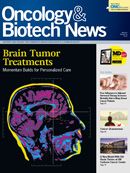Publication
Article
Oncology & Biotech News
Payers Try to Drive Down Costs in Cancer Care
Author(s):
Steadily rising expenses and a proliferation of new drugs are speeding adoption of a host of measures designed to contain drug and treatment outlays more directly

Commercial and public health plans have historically controlled oncology costs by negotiating tough contracts with physicians and facilities. Steadily rising expenses and a proliferation of new drugs, however, are speeding adoption of a host of measures designed to contain drug and treatment outlays more directly. Preauthorizations and stricter coverage policies for some therapies, for example, are now routine in cancer care.
Payers are also pursuing new models for care and reimbursement, including offering physicians incentives to follow evidence-based treatment pathways. A growing number of public and private plans are mulling adoption of episode-based payments (also known as bundling) that would cover all agreed-on services and costs incurred during a clinically defined period of care. In addition, payers are more closely monitoring—and guiding— patients’ prescription drug use through specialty pharmacy programs.
“These strategies are gaining traction because of the steadily increasing costs of cancer care, which is driven both by increasingly costly treatments and the rising incidence of cancer with an aging population,” said Elizabeth Danielson, director of payor relations for the National Comprehensive Cancer Network (NCCN) and co-author of a recent study, Managed Care & Medical Oncology: The Focus is on Value. Danielson pointed to the growing cost of new drugs and biologics emerging from a vast pipeline of innovative cancer treatments as examples of major drivers of cancer care costs.
A Shift to ASP-Based Reimbursement
In the meantime, oncologists have seen their drug margins—a longtime source of profits that offset other costs—drop significantly, noted Michael Neuss, MD, chair of the Quality Oncology Practice Initiative steering committee for the American Society of Clinical Oncology.
The revenue slide began after the Centers for Medicare & Medicaid Services (CMS) implemented a new reimbursement schedule following the enactment of the Medicare Modernization Act of 2003. The formula for drug payments, previously based on the average wholesale price (AWP), shifted to incorporate the average sales price (ASP), which encompasses all sales, including bulk discounts. Commercial payers followed Medicare’s footsteps in adopting this reimbursement algorithm.
As of 2008, approximately one-third of managed care organizations had adopted ASP-based reimbursement, and a survey in the Genentech Oncology Trend Report found that another 21% planned to do so by the end of that year. Now, 2 years later, nearly 85% of payers surveyed in Genentech’s updated 2009-2010 trend report have moved to ASP-based compensation. Well over half the oncologists interviewed for the survey said profit margins on infusion therapies had fallen.
“Medicare pays 106% of ASP and commercial plans had been paying significantly better, but they’ve started to collapse that margin,” said Neuss. “Many Medicare drugs are underwater, although most aren’t.” He expects the trend to continue. “As the population ages and Medicare becomes an even more dominant payer, it will control the system and will continue to compress drug margins,” he predicted. “Other payers will follow.”
Cutting Costs
Health plans are also cutting drug costs by encouraging the use of generic drugs over brand names through tiered payments for chemotherapy agents, noted Kevin Schulman, MD, director of Duke University’s Center for Clinical and Genetic Economics and director of the Health Sector Management Program at Duke’s Fuqua School of Business. “This places a tremendous burden on patients for use of brand-name products,” Schulman said.
To offset declining drug revenues, oncologists have scrambled to diversify their practices. Some practices have added imaging services and partnered with radiation therapists, while dropping ancillary services such as research, dietician counseling, and social work support. To further offset their losses, some physicians refer patients undergoing the most unprofitable therapies to hospital settings. “Most importantly, [these physicians] don’t want to buy pharmaceuticals and then find their practices unreimbursed for the drugs that have already been administered to patients,” Neuss said.
The NCCN’s Danielson noted a rise in preauthorization and precertification requirements, particularly in areas such as radiology diagnostics. Oncologists said they are increasingly expected to follow evidence-based guidelines for prescribing off-label drugs by ensuring that the intended use is listed in specified compendia.
“Payers are more vigilant in making sure treatments are within guidelines,” said Neuss. “Doctors are also more vigilant.” He added, “In some cases, to minimize risk, we’re seeking preauthorizations even when they have already agreed to cover treatment that’s compliant with guidelines.”
In Managed Care & Medical Oncology: The Focus is on Value, Danielson and her co-authors cited studies showing that about half of commercial plans require evidence that a patient’s laboratory values (ie, blood-level parameters for a particular disease) are within a specified range before certain drugs will be covered. Somewhat under half (44%) require that a therapy with a preferred drug fail before an alternative is approved.
A growing reliance on biomarkers—the biologic indicators of disease or therapeutic effects that identify patients most likely to benefit from particular therapies—is expected to further influence drug selection. In 2006, the FDA, the National Cancer Institute, and CMS launched a major joint initiative to improve therapeutic outcomes in cancer by identifying and evaluating biomarkers and developing targeted treatments.
Specialty Pharmacies
Payers increasingly rely on specialty pharmacy programs to buy drugs and manage their use. Genentech’s 2009-2010 trend report found that about two-thirds of managed care organizations use these programs to obtain and distribute oncology drugs, while many also require that physicians purchase specific drugs through them.
Danielson noted that specialty pharmacy programs are expanding. “They’re no longer just doing group purchasing, but also tracking and providing data on drug usage patterns and counseling patients on issues such as taking their medications as prescribed, possible medication side effects, and refilling prescriptions according to physician orders.”
"Oncologists have seen their drug margins drop significantly.”
-Michael Neuss, MD
Although oncologists are responding to market forces, they are working collaboratively with payers in some instances to refine treatments and manage costs. Earlier this year, for example, the insurer UnitedHealthcare launched a database to compare clinical and claims data for breast, colon, and lung cancer patients in its registry in an effort to gauge quality of care based on adherence to NCCN’s approved treatment guidelines. The company is sharing results with participating oncologists, where permitted by privacy laws, in the hope that care will become more standardized across the country.
“There is a trend toward pathway-directed care,” said Neuss. “The costs in one recent study were shown to be dramatically lower on specified pathways, and some payers will pay better if it’s done that way.”
Episode-Based Payments
Payers and physicians are looking at episode-based payments, which encourage the coordination of services among different providers and institute other efficiencies, as a way to trim expense. “Both private payers and the federal government are increasingly interested in this,” said Schulman. “One of the provisions of healthcare reform is a $10 billion fund for Medicare payment innovation that includes several proposed new payment models for clinical services.”
Neuss indicated that oncologists were openminded on the subject of episode-based payments, which he feels are around the corner. “[Payers] would offer strong incentives to control costs,” he said. “If payers would share those savings with oncologists, it could provide an opportunity for us to focus a little less on drug margins.”
As they wrestle with market changes, both physicians and payers face looming uncertainties. The current political volatility, coupled with the uncertain future of healthcare reform, makes it difficult to predict industry trends. “It’s an unstable market— not an environment where anyone can rest comfortably,” Schulman concluded.









